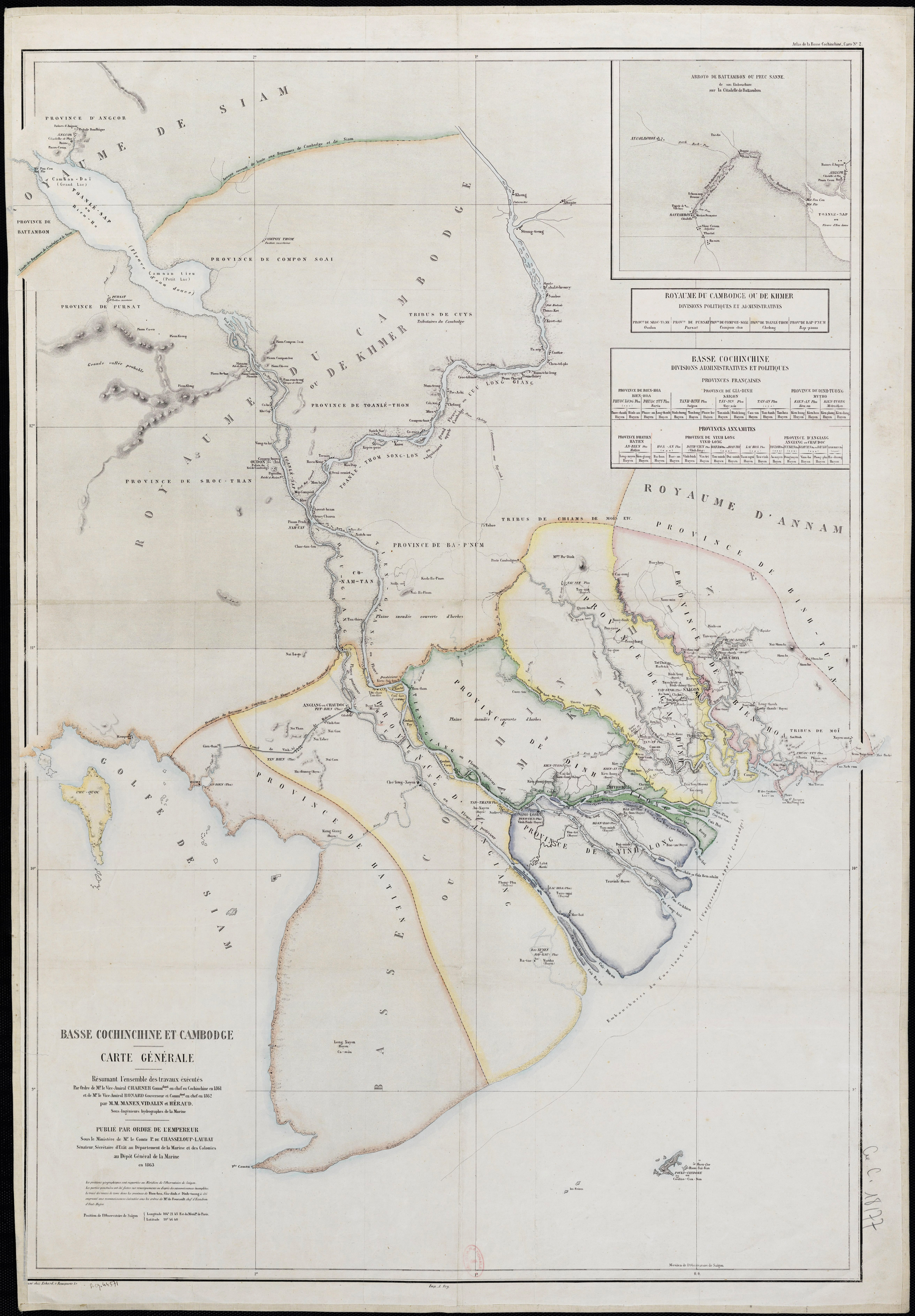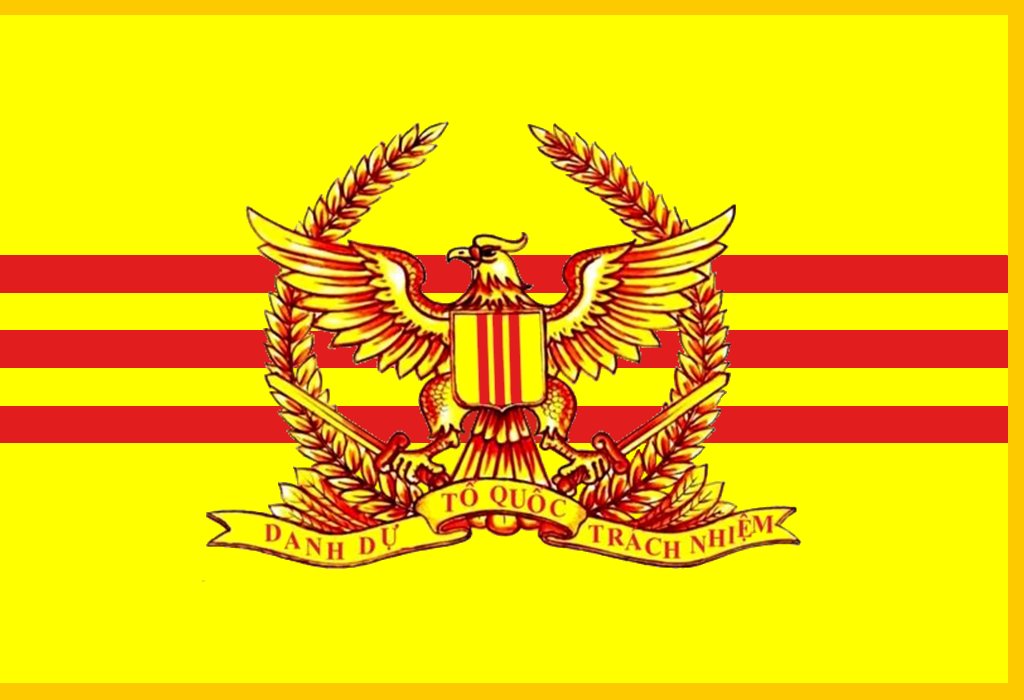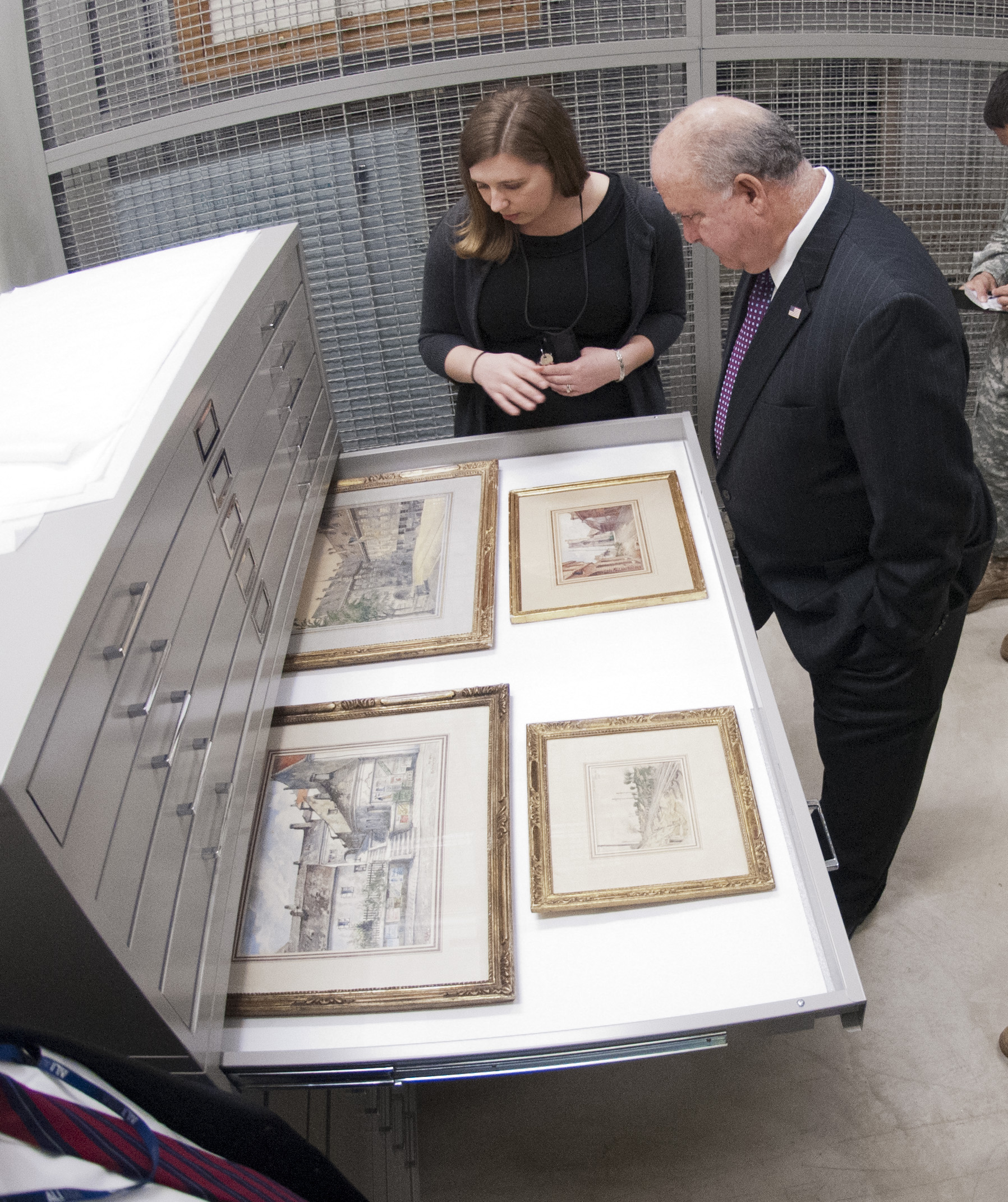|
Lý Tòng Bá
Lý Tòng Bá (14 November 1931, in Long Xuyên – 22 February 2015, in Las Vegas, Nevada) was a major general of the South Vietnamese Army of the Republic of Vietnam. Military career He entered the Vietnamese National Army in the 1950s during the First Indochina War. He was trained in armor and rose in rank, reaching captain by the early 1960s. In 1962 Bá commanded a mechanized company of M113 armored personnel carriers attached to the 7th Division based at Mỹ Tho. On 25 September 1962 Bá's unit of nine M113s took part in a multi-regiment operation against the Vietcong (VC) in the Plain of Reeds. Despite the advice of the US armored adviser that the terrain was unsuited for armor, Bá's unit was ordered to ordered to cross a canal and attack a group of 60 VC. After the lead unit had crossed they saw a group of 14 VC and Bá, decided to attack. While the armored adviser proposed a flank attack Bá's M113s charged straight ahead through the flooded paddies towards wher ... [...More Info...] [...Related Items...] OR: [Wikipedia] [Google] [Baidu] |
Long Xuyên
Long Xuyên (), formally named Thủ Đông Xuyên, is the capital city of An Giang province, in the Mekong Delta region of south-western Vietnam. History In 1789, a group of explorers established a small outpost in the Tam Khe canal, naming it Dong Xuyen. Soon after, a marketplace was created and named Long Xuyên, but by the 1860s the area became better known for the Long Xuyen market than by the official outpost's name. From 1877, the reach of Long Xuyên grew as the city's administration became responsible for an increasing number of neighborhoods and wards. Long Xuyen would not be designated as a formal city until 1999. Geography It is located approximately 1,950 km south of Hanoi, 189 km from Ho Chi Minh City, and 45 km from the Cambodian border. The population of Long Xuyên city is 272,365 (April 2019), with an area of approximately 114.96 km2. The city is subdivided to 13 commune-level subdivisions, including the wards of: Mỹ Bình, Mỹ Long, Mỹ Xuyên, B� ... [...More Info...] [...Related Items...] OR: [Wikipedia] [Google] [Baidu] |
7th Division (South Vietnam)
The Seventh Division was part of the Army of the Republic of Vietnam (ARVN), the army of the nation state of South Vietnam that existed from 1955 to 1975. It was part of the IV Corps, which oversaw the Mekong Delta region of the country. History The Division was originally established as the 4th Field Division and redesignated as the 7th Infantry Division in 1959. On 8 July 1959 a Viet Cong (VC) attack on a Division camp at Bien Hoa killed two U.S. advisers, Major Dale R. Buis and Master Sergeant Chester M. Ovnand, among the first Americans killed in the Vietnam War. The division was based in Mỹ Tho, and due to the division's close proximity to the capital Saigon was a key factor in the success or failure of the various coup attempts in the nation's history. As a result, the loyalty of the commanding officer of the division was crucial in maintaining power. In the coup attempt of 1960, the loyalist Colonel Huỳnh Văn Cao used the Division to storm into Saigon to save ... [...More Info...] [...Related Items...] OR: [Wikipedia] [Google] [Baidu] |
Ngô Đình Nhu
James (Giacôbê) Ngô Đình Nhu (7 October 19102 November 1963) was a Vietnamese archivist and politician. He was the younger brother and State Counsellor of South Vietnam's first president, Ngô Đình Diệm. Although he held no formal executive position, he wielded immense unofficial power, exercising personal command of both the ARVN Special Forces (a paramilitary unit which served as the Ngô family's ''de facto'' private army) and the Cần Lao political apparatus (also known as the Personalist Labor Party) which served as the regime's ''de facto'' secret police. In his early years, Nhu was a quiet and bookish individual who showed little inclination towards the political path taken by his elder brothers. While training as an archivist in France, Nhu adopted the Roman Catholic ideology of personalism to create the Person Dignity Theory, although critics claimed that he misused that philosophy. Upon returning to Vietnam, he helped his brother in his quest for politica ... [...More Info...] [...Related Items...] OR: [Wikipedia] [Google] [Baidu] |
1963 South Vietnamese Coup D'état
In November 1963, Leaders of South Vietnam, President Ngô Đình Diệm and the Personalist Labor Revolutionary Party of the Republic of Vietnam (South Vietnam) were deposed by a group of CIA-backed Army of the Republic of Vietnam officers who disagreed with Diệm's handling of the Buddhist crisis and the North Vietnamese and Viet Cong threat to South Vietnam. In South Vietnam, the coup was referred to as ''Cách mạng 1-11-63'' ("1 November 1963 Revolution"). The Kennedy administration had been aware of the coup planning, but Cable 243 from the United States Department of State to U.S. Ambassador to South Vietnam Henry Cabot Lodge Jr. stated that it was U.S. policy not to try to stop it. Lucien Conein, the Central Intelligence Agency's liaison between the U.S. Embassy and the coup planners, told them that the U.S. would not intervene to stop it. Conein also provided funds to the coup leaders. The coup was led by General Dương Văn Minh and started on 1 November 1963. It pr ... [...More Info...] [...Related Items...] OR: [Wikipedia] [Google] [Baidu] |
Independence Palace
The Independence Palace (), also publicly and officially known as the Reunification Convention Hall or simply Reunification Hall (), is a landmark in Ho Chi Minh City (formerly known as Saigon), Vietnam. It was designed by architect Ngô Viết Thụ and was the home and workplace of the president of the Republic of Vietnam (South Vietnam). It was the site of the Fall of Saigon on 30 April 1975 that ended the Vietnam War, when a North Vietnamese Army tank crashed through its gates. After the reunification of Vietnam, the building continued to serve as a government and presidential office until 1976 when the capital of South Vietnam was officially moved to Hanoi, and the government’s functions were relocated. The palace is now preserved as a convention hall for state events, also museum that open to the public and being a popular tourist attraction in Ho Chi Minh City. History Republic of Vietnam Construction of the current Independence Palace was ordered by President Ng ... [...More Info...] [...Related Items...] OR: [Wikipedia] [Google] [Baidu] |
Saigon
Ho Chi Minh City (HCMC) ('','' TP.HCM; ), commonly known as Saigon (; ), is the most populous city in Vietnam with a population of around 14 million in 2025. The city's geography is defined by rivers and canals, of which the largest is Saigon River. As a Municipalities of Vietnam, municipality, Ho Chi Minh City consists of 16 List of urban districts of Vietnam, urban districts, five Huyện, rural districts, and one Municipal city (Vietnam), municipal city (sub-city). As the largest financial centre in Vietnam, Ho Chi Minh City has the largest gross regional domestic product out of all Vietnam provinces and municipalities, contributing around a quarter of the Economy of Vietnam, country's total GDP. Ho Chi Minh City metropolitan area, Ho Chi Minh City's metropolitan area is List of ASEAN country subdivisions by GDP, ASEAN's 5th largest economy, also the biggest outside an ASEAN country capital. The area was initially part of Cambodian states until it became part of the Vietna ... [...More Info...] [...Related Items...] OR: [Wikipedia] [Google] [Baidu] |
Ngo Dinh Diem
Ngô Đình Diệm ( , or ; ; 3 January 1901 – 2 November 1963) was a South Vietnamese politician who was the final prime minister of the State of Vietnam (1954–1955) and later the first president of South Vietnam (Republic of Vietnam) from 1955 until his capture and assassination during the CIA-backed 1963 coup d'état. Diệm was born into a prominent Catholic family with his father, Ngô Đình Khả, being a high-ranking mandarin for Emperor Thành Thái during the French colonial era. Diệm was educated at French-speaking schools and considered following his brother Ngô Đình Thục into the priesthood, but eventually chose to pursue a career in the civil service. He progressed rapidly in the court of Emperor Bảo Đại, becoming governor of Bình Thuận Province in 1929 and interior minister in 1933. However, he resigned from the latter position after three months and publicly denounced the emperor as a tool of France. Diệm came to suppor ... [...More Info...] [...Related Items...] OR: [Wikipedia] [Google] [Baidu] |
Leaders Of South Vietnam
This is a list of leaders of South Vietnam, since the establishment of the Autonomous Republic of Cochinchina in 1946, and the division of Vietnam in 1954 until the fall of the Republic of Vietnam in 1975, and the reunification of Vietnam in 1976. Legends Heads of state State of Vietnam (1949–1955) Chief of State Under the State of Vietnam, the position of head of state A head of state is the public persona of a sovereign state.#Foakes, Foakes, pp. 110–11 " he head of statebeing an embodiment of the State itself or representative of its international persona." The name given to the office of head of sta ... is known as Chief of the State of Vietnam and was held by Bảo Đại and Ngo Dinh Diem First Republic of Vietnam (1955–1963) President Vice president Military junta (1963–1967) Heads of state During the military junta period, the heads of state of South Vietnam did not always hold real power, the heads of military were de facto lea ... [...More Info...] [...Related Items...] OR: [Wikipedia] [Google] [Baidu] |
John Paul Vann
John Paul Vann (born John Paul Tripp; July 2, 1924 – June 9, 1972) was a lieutenant colonel in the United States Army, later retired, who became well known for his role in the Vietnam War. Although separated from the military before the Vietnam War reached its peak, he returned to service as a civilian under the auspices of the United States Agency for International Development and by the waning days of the war was the first American civilian to command troops in regular combat there. He received the Presidential Medal of Freedom and was the only civilian in Vietnam to receive the Distinguished Service Cross. He died on June 9, 1972, in a helicopter crash in Vietnam just after the Battle of Kontum. Early life Born John Paul Tripp in Norfolk, Virginia, on July 2, 1924, out of wedlock, to John Spry and Myrtle Lee Tripp. Vann's mother married Aaron Frank Vann, and Vann took his stepfather's surname; Vann had three half-siblings. In 1942, Aaron Vann officially adopted him. Although ... [...More Info...] [...Related Items...] OR: [Wikipedia] [Google] [Baidu] |
United States Army Center Of Military History
The United States Army Center of Military History (CMH) is a directorate within the United States Army Training and Doctrine Command. The Institute of Heraldry remains within the Office of the Administrative Assistant to the Secretary of the Army. The center is responsible for the appropriate use of military history, history and military records throughout the United States Army. Traditionally, this mission has meant recording the official history of the army in both peace and war, while advising the army staff on historical matters. CMH is the flagship organization leading the Army Historical Program. CMH is also in charge of the National Museum of the United States Army, at Fort Belvoir, Fort Belvoir, Virginia. Mission The center traces its lineage back to historians under the Secretary of War who compiled the Official Records of the American Civil War, ''Official Records of the Rebellion'', an extensive history of the American Civil War begun in 1874. A similar work on World ... [...More Info...] [...Related Items...] OR: [Wikipedia] [Google] [Baidu] |
M2 Browning
The M2 machine gun or Browning .50-caliber machine gun (informally, "Ma Deuce") is a heavy machine gun that was designed near the end of World War I by John Browning. While similar to Browning's M1919 Browning machine gun, which was chambered for the .30-06 Springfield, .30-06 cartridge, the M2 uses Browning's larger and more powerful .50 BMG (12.7 mm) cartridge. The design has had many designations; the official U.S. military designation for the infantry type is Browning Machine Gun, Cal. .50, M2, HB, Flexible. It has been used against infantry, light armored vehicles, watercraft, light fortifications, and low-flying aircraft. The gun has been used extensively as a vehicle weapon and for aircraft armament by the United States since the 1930s. It was heavily used during World War II, the Korean War, the Vietnam War, the Falklands War, the Soviet–Afghan War, the Gulf War, the Iraq War, and the War in Afghanistan (2001–present), War in Afghanistan. It is the primary heavy mac ... [...More Info...] [...Related Items...] OR: [Wikipedia] [Google] [Baidu] |









